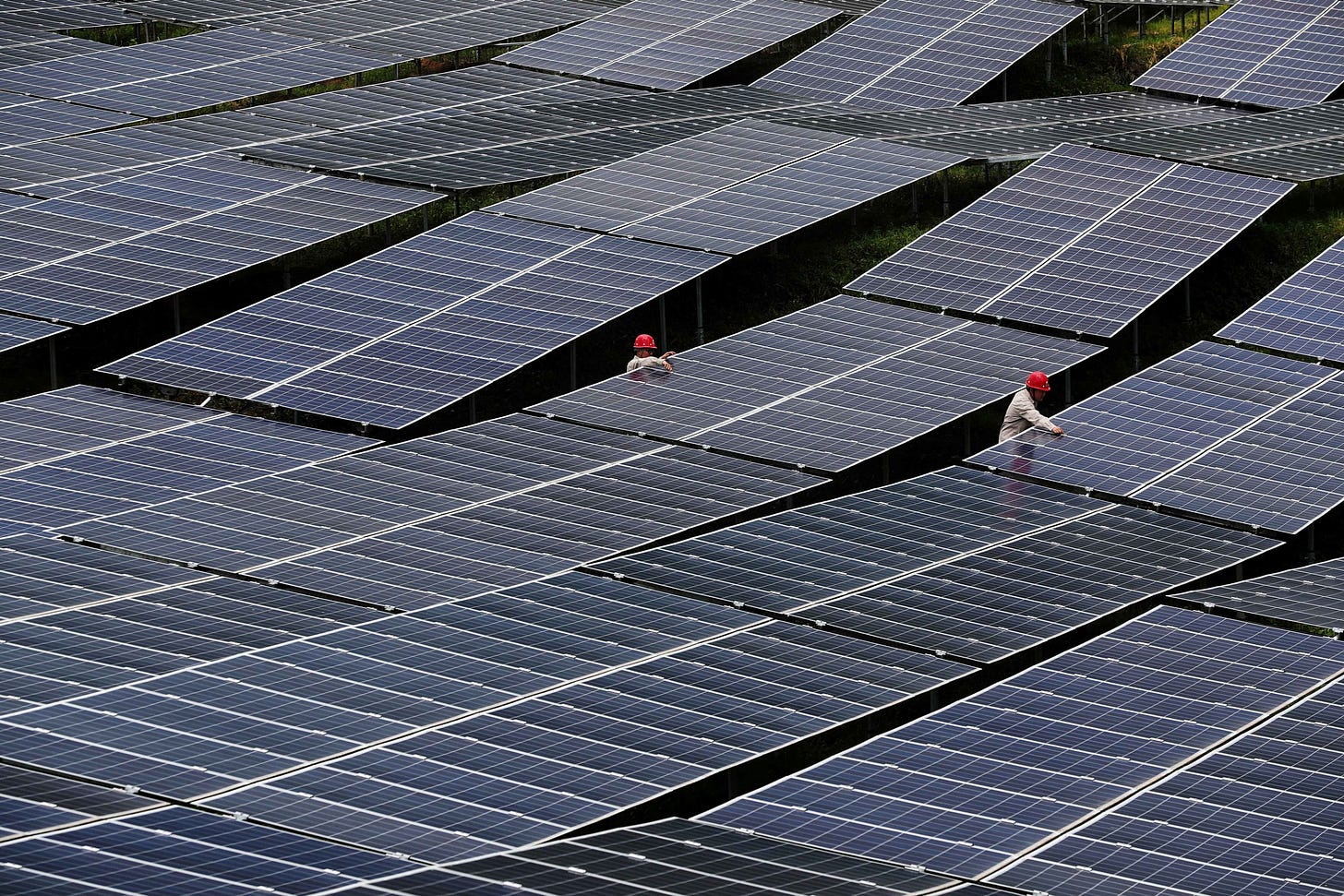Solar Progress
Monday 9 June 2025
Global solar is currently enjoying a growth acceleration as cost declines press onward, and adoption itself achieves real momentum. There are network effects in the spread of technology and solar is no different. Countries and regions that embark on solar deployment soon discover that supply chains and demand converge nicely with each other, likely exerting downward pressure on the cost of adding the marginal GW of new solar capacity. Growth begets growth. The distribution of new solar serves to enhance the future spread of solar. As a result, we have now crossed a new high watermark here in 2025, as solar provided roughly 10% of global electricity in the month of April, according to Ember’s recently updated data tool.
While trends cannot generally be built on the back of a single month’s data, the forward march of solar is relentless enough to allow us to treat a single month as a good and solid signal for what’s to come. Solar share of global electricity already reached 5.6% in 2023, will likely hit 6.3% as of last year, 2024, and is surely on its way above 7.0% in 2025. As always, variations in total global power demand growth itself will largely determine solar’s ultimate share, each year. The denominator of global power, not the numerator of global solar, is in control as it represents a vast foundation of incumbent, economically viable fossil-fuel power capacity.
To wrest control back from the denominator, global solar needs to cross an important line of demarcation: going beyond the task of meeting annual marginal growth, and crossing into annual surplus. The idea that we should try building excess solar is not a new one. While doing so would not immediately make existing, fossil-fuel power capacity uneconomic, flooding countries and regions with excess solar would eventually depress power prices, and likely take out at a tranche or two of incumbent power. This potential would be further supported by the falling cost of storage, which of course is the key component for making solar function more like “baseload” power.
One avenue through which solar can start making some progress into surplus is through the rooftop channel, both domestic and commercial. When households and corporations add rooftop solar, no analysis of total system demand is being made. Rather, these are decisions made for the sake of their own finances. Developers of utility-scale solar, on the other hand, need to line up contracts, which ties the growth of those projects to actual projected demand. This is yet another lens through which to understand that solar (and wind power) will continue to dominate marginal power system growth, but will struggle to cut into the fossil-fuel base. The fossil-fuel base is in a position to let go of system share on its own terms, not the terms set by renewables.
Has China managed to halt growth of fossil-fuel power capacity, having pursued for many years now its titanic buildout of wind and solar? While we cannot know the answer in real time, we do know that this inflection point is inevitable. Let’s pause here to cite some core views of Cold Eye Earth, regarding the current juncture in the energy transition.
• Solar, wind, and storage will come to dominate marginal growth of electricity in nearly every every country, every region. Fossil-fuel power capacity simply cannot compete with this triad for new build. So, prepare for zero growth everywhere for fossil fuels in power.
• Solar, wind, and storage are cheap, but not cheap enough to dislodge incumbent fossil-fuel power at a rate other than a very slow one, at best. The triad just doesn’t have the economic advantage that many assume would render the existing base easily or quickly uneconomic.
• No mysterious law is required to explain how incumbent power is largely protected from renewables, but marginal power growth is dominated by renewables. These dynamics flow directly from the economic terms that currently differentiate the two types of power from each other.
Keep reading with a 7-day free trial
Subscribe to Cold Eye Earth to keep reading this post and get 7 days of free access to the full post archives.



